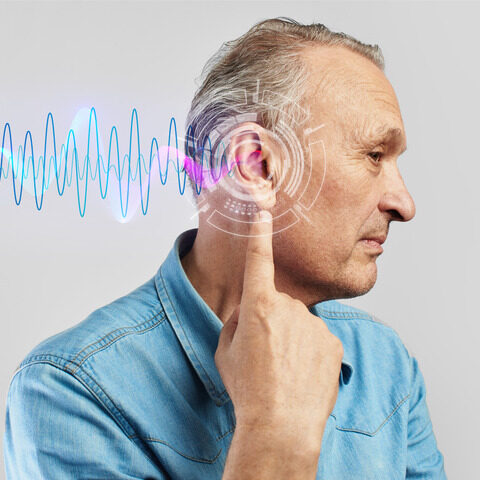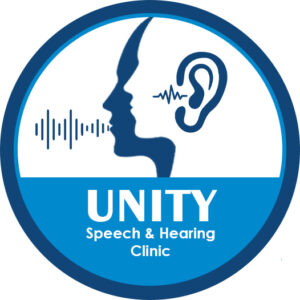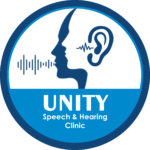
Hearing loss is a prevalent condition that can affect individuals of all ages, with various causes ranging from genetics to environmental factors. Understanding the types of hearing loss, the role of audiologists, and the features of hearing aids is crucial for those seeking assistance and treatment. In this article, we explore the causes of hearing loss in adults and children, the types of hearing loss, the selection and features of hearing aids, as well as the importance of professional care and maintenance.
Hearing is the ability to perceive sound by the ear. The outer ear collects sound waves and directs them into the middle ear. The middle ear amplifies the sound waves and sends them to the inner ear. The inner ear converts the sound waves into electrical signals that are sent to the brain. The brain interprets these signals as sound.
Loss of hearing can occur at any age, but it is more common in older adults. There are three main types of hearing loss: conductive hearing loss, sensorineural hearing loss, and mixed hearing loss.
Conductive hearing loss is caused by a problem in the outer or middle ear that prevents sound waves from reaching the inner ear. Common causes of conductive hearing loss include earwax buildup, infection, and otosclerosis.
Sensorineural hearing loss is caused by damage to the inner ear or hearing nerve. Common causes of sensorineural hearing loss include noise exposure, ageing, and certain medications.
Mixed hearing loss is a combination of conductive and sensorineural hearing loss.
Causes of Hearing Loss in Adults:
Noise Exposure: Prolonged exposure to loud noises, either in the workplace or through recreational activities like music concerts or shooting ranges, can lead to gradual hearing loss over time.
Aging (Presbycusis): Age-related hearing loss is a common occurrence as individuals get older, primarily affecting the higher frequencies of sound perception.
Certain Medications: Some medications, known as ototoxic drugs, can damage the delicate structures in the inner ear and result in hearing impairment.
Head Injury: Traumatic head injuries, particularly those affecting the skull or inner ear, can cause hearing loss or other auditory problems.
Meniere’s Disease: This inner ear disorder can cause recurrent vertigo, tinnitus, and fluctuating hearing loss, often due to fluid imbalance.
Otosclerosis: An abnormal bone growth in the middle ear can impede the movement of the ear bones (ossicles), leading to conductive hearing loss.
Tumors: Noncancerous (benign) or cancerous (malignant) growths in the ear or on the auditory nerve can disrupt hearing function.
Genetic Disorders: Inherited genetic mutations can result in various types and degrees of hearing loss.
Causes of Hearing Loss in Children:
Genetics: Hereditary factors play a significant role in childhood hearing loss, and certain genetic mutations can lead to congenital or progressive hearing impairment.
Prenatal Infections: Infections such as rubella, cytomegalovirus (CMV), and toxoplasmosis contracted by the mother during pregnancy can cause hearing loss in the baby.
Birth Complications: Difficulties during birth, such as prematurity, low birth weight, or lack of oxygen, can contribute to hearing problems in newborns.
Ear Infections: Recurrent or severe ear infections in childhood can damage the middle ear and lead to hearing difficulties.
Noise Exposure: Excessive exposure to loud noises, including listening to loud music or being in noisy environments, can harm a child’s hearing.
Head Injury: Trauma to the head, especially in cases involving skull fractures or injuries to the ear, can result in hearing loss.
Causes of Hearing Loss in Newborn Babies:
Genetics: Congenital hearing loss can be due to genetic mutations that are present from birth and may or may not be inherited from parents.
Prenatal Infections: Infections acquired by the mother during pregnancy, such as rubella or CMV, can affect the developing auditory system of the baby.
Birth Complications: Difficulties during childbirth, including oxygen deprivation or trauma, can lead to immediate hearing issues in newborns.
Certain Medications Taken by the Mother During Pregnancy: Some medications taken by the pregnant mother can have adverse effects on fetal development, including the auditory system, potentially causing hearing loss in the newborn.
Types of hearing aid loss:
- BTE (Behind-The-Ear): Suitable for all ages, with variants like Power BTE, Super Power BTE, and Ultra Power BTE. Offers wireless connectivity and comes with rechargeable options.
- RIC/RITE (Receiver-In-Canal or Receiver-In-The-Ear): Less visible than BTE, ideal for sloping hearing loss. Can be powered by rechargeable or disposable batteries.
- ITC (In The Canal): Custom-molded, fitting partly in the ear canal. Suitable for mild to moderately severe hearing loss. Easy to use for the elderly and offers smart mobile phone connectivity.
- CIC (Completely In The Canal): Fits deep inside the ear canal. Fitting depends on ear canal size and shape. Powered by mini cell batteries.
- IIC (Invisible In The Canal): Extremely discreet and deep-fitting. Suitable for mild to moderately severe hearing loss but lacks some features like rechargeable batteries and Bluetooth.
Mild hearing loss: Difficulty hearing soft sounds, such as whispering or birds chirping.
Moderate hearing loss: Difficulty hearing normal conversation levels, especially in noisy environments.
Severe hearing loss: Difficulty hearing most sounds, even at loud volumes.
Profound hearing loss: Inability to hear most sounds, even at loud volumes.
Digital Hearing Aids:
Digital hearing aids are like smart computers in your ear, offering an enhanced hearing experience. They automatically adjust to your surroundings based on your hearing loss or audiogram, reducing noise and improving voice clarity. Here’s how they work:
- A microphone captures environmental sounds and converts them into electrical signals.
- An amplifier boosts the volume, cleans up the signal by removing noise, and enhances speech.
- The processed signal is sent to a receiver or speaker inside the hearing aid, which turns it back into sounds and directs them to your ear, allowing your brain to process the impulses.
Choosing the Right Hearing Aid:
When selecting a hearing aid, consider these factors:
- Price: Ensure it fits your budget.
- Warranty: Look for devices with good warranty coverage.
- Brand: Opt for reputable companies known for quality.
Pure Tone Audiometry:
Pure tone audiometry is a crucial diagnostic test to measure your hearing sensitivity. It’s performed by an Audiologist in a soundproof room and is essential because it helps determine the type and degree of your hearing loss. Here’s what you need to know:
- Procedure: The test is performed in a sound-treated room, where you’ll listen for tones at different frequencies and volumes. You’ll signal when you hear the tones.
- Equipment: Audiometers are used to measure pure tone thresholds through air conduction (AC) and bone conduction (BC).
- AC: Assesses the entire auditory pathway using earphones.
- BC: Stimulates the cochlea directly.
- Results: The AC and BC thresholds are plotted on an audiogram, providing a visual representation of your hearing thresholds. This audiogram helps diagnose the nature and degree of your hearing loss, whether it’s conductive (middle ear), sensorineural (inner ear or auditory nerve), or mixed. It also guides treatment options, such as hearing aids or medical interventions.
This condensed version provides a quick overview of digital hearing aids and how to choose the right one, along with the importance of pure tone audiometry in assessing hearing loss.
Who is an audiologist?
An audiologist is a healthcare professional who specializes in hearing and balance disorders. Audiologists can diagnose hearing loss, recommend treatment options, and fit and program hearing aids.
Hearing aid care professional
A hearing aid care professional is a person who is trained to help people with hearing loss choose and use hearing aids. Hearing aid care professionals can also provide hearing aid maintenance and repair services.
Tympanometry and Acoustic Reflex Testing:
These tests employ an Impedance Audiometer, and Unity Speech and Hearing Clinic is globally renowned for its expertise in these evaluations.
Special Tests:
Audiologists perform specialized assessments to identify cochlear or retrocochlear conditions, including disorders like Meniere’s disease. Additionally, auditory fatigue is meticulously measured in these assessments.
SISI (Short Increment Sensitivity Index):
SISI is a valuable diagnostic tool that quantifies hearing sensitivity variations in response to short increments in stimulus intensity.
Pediatric Hearing Evaluation:
Assessing the hearing of young children is a vital undertaking with far-reaching consequences. Proficiency in hearing is fundamental to language development and academic performance. Sometimes, children may exhibit unexpected declines in their academic progress, with difficulties in articulation and speech clarity. These issues could stem from undetected partial hearing loss, necessitating a more comprehensive evaluation.
Exploring Leading Hearing Aid Brands: Signia, Oticon, Phonak, Resound, Interton, Unitron, and Hansaton
Signia: Signia is a renowned hearing aid brand known for its cutting-edge technology and innovative solutions. They offer a wide range of hearing aids that cater to various degrees of hearing loss, with a focus on clear sound quality and user-friendly features.
Oticon: Oticon is committed to developing hearing aids that prioritize natural sound perception and user comfort. Their devices incorporate advanced signal processing and connectivity options, making them a popular choice for those seeking a seamless listening experience.
Phonak: Phonak is recognized for its dedication to addressing diverse hearing needs. They offer a broad spectrum of hearing aids, including those designed for children and individuals with severe hearing loss.
Resound, Interton, Unitron, and Hansaton
Signia: Signia is a renowned hearing aid brand known for its cutting-edge technology and innovative solutions. They offer a wide range of hearing aids that cater to various degrees of hearing loss, with a focus on clear sound quality and user-friendly features.
Oticon: Oticon is committed to developing hearing aids that prioritize natural sound perception and user comfort. Their devices incorporate advanced signal processing and connectivity options, making them a popular choice for those seeking a seamless listening experience.
Phonak: Phonak is recognized for its dedication to addressing diverse hearing needs. They offer a broad spectrum of hearing aids, including those designed for children and individuals with severe hearing loss. Phonak’s products often feature wireless connectivity for enhanced communication.
Resound: Resound places emphasis on creating hearing aids that deliver superior sound quality in various listening environments. Their devices are known for their adaptive technology, allowing wearers to transition seamlessly between quiet and noisy settings.
Interton: Interton, part of the GN Group, offers hearing solutions that prioritize affordability without compromising on quality. They provide a range of dependable hearing aids suitable for various lifestyles and hearing requirements.
Unitron: Unitron focuses on creating hearing aids that are personalized to the wearer’s unique preferences and needs. Their devices often feature user-friendly controls and options for seamless communication in challenging listening situations.
Hansaton: Hansaton is known for its dedication to innovation and design, producing hearing aids that blend advanced technology with aesthetics. Their devices prioritize discretion and comfort, catering to individuals seeking both style and functionality in their hearing aids.
Selection of hearing aid:
The best way to choose a hearing aid is to work with an audiologist. The audiologist will assess your hearing loss and recommend a hearing aid that is right for you. There are many different types and styles of hearing aids available, so it is important to find one that is comfortable and fits your lifestyle.
Features in hearing aids:
Wireless connectivity: Allows you to connect your hearing aid to your smartphone or other devices to stream audio directly to your hearing aid.
Bluetooth connectivity: Allows you to make and receive phone calls hands-free with your hearing aid.
Channels: The number of channels in a hearing aid determines how well it can distinguish between different frequencies of sound.
Bands: The number of bands in a hearing aid determines how well it can amplify sound at different frequencies.
Directionality: Allows you to focus on the sound coming from in front of you and reduce background noise.
Noise reduction: Helps to reduce background noise so that you can hear more clearly.
Difference between analogue and digital hearing aids:
Analog hearing aids amplify all sounds equally. Digital hearing aids can amplify different frequencies of sound to different degrees, depending on your hearing loss. Digital hearing aids also have features like noise reduction and directionality that are not available in analog hearing aids.
Mould:
A mould is a custom-made earpiece that holds a hearing aid in place. Moulds can be made of soft or hard plastic. Soft moulds are more comfortable, but they may not last as long as hard moulds.
Swimming plug:
A swimming plug is a device that is used to protect the ear from water. Swimming plugs can be made of silicone or foam. They are inserted into the ear canal and create a seal to prevent water from entering the ear.
Hearing aid life, services, warranty, and repair:
Hearing aids typically last for three to five years. However, the life of a hearing aid can vary depending on the type of hearing aid, the amount of use, and how well the hearing aid is cared for.
Hearing aid services include programming, adjustments, and repairs. Hearing aids should be programmed by an audiologist to ensure that they are providing the best possible sound quality. Hearing aids should also be adjusted regularly to account for changes in hearing loss.
Hearing loss can significantly impact an individual’s quality of life, but with the help of audiologists and modern hearing aid technology, many can regain their ability to hear and communicate effectively. Whether it’s addressing congenital hearing issues in newborns or age-related hearing loss in adults, seeking professional guidance is the first step towards a world of improved auditory experiences. Regular care, maintenance, and access to the right hearing aid can open up a world of sound for those affected by hearing loss, enhancing their overall well-being and connectivity with the world around them.



One Response
Hi, this is a comment.
To get started with moderating, editing, and deleting comments, please visit the Comments screen in the dashboard.
Commenter avatars come from Gravatar.